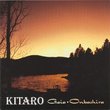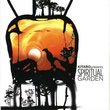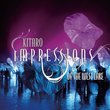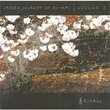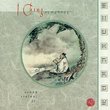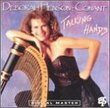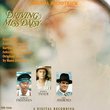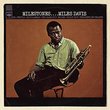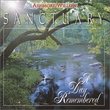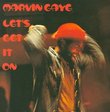| All Artists: Kitaro Title: Sacred Journey of Kukai Members Wishing: 1 Total Copies: 1 Label: Domo Records Release Date: 9/9/2003 Genres: New Age, Pop Style: Meditation Number of Discs: 1 SwapaCD Credits: 1 UPC: 794017302225 |
Search - Kitaro :: Sacred Journey of Kukai
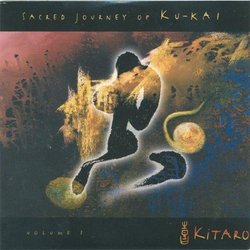 | Kitaro Sacred Journey of Kukai Genres: New Age, Pop
Sacred Journey of Ku-kai is first in a series of albums intended to address personal and global concerns alongside forward-thinking views of spiritual growth. Kitaro has embarked on a spiritual pilgrimage, visiting temple... more » ![header=[] body=[This CD is available to be requested as disc only.]](/images/attributes/disc.png?v=15401716) ![header=[] body=[This CD is unavailable to be requested with the disc and back insert at this time.]](/images/attributes/greyed_disc_back.png?v=15401716) ![header=[] body=[This CD is unavailable to be requested with the disc and front insert at this time.]](/images/attributes/greyed_disc_front.png?v=15401716) ![header=[] body=[This CD is unavailable to be requested with the disc, front and back inserts at this time.]](/images/attributes/greyed_disc_front_back.png?v=15401716) |
Larger Image |
CD DetailsSynopsis
Album Description Sacred Journey of Ku-kai is first in a series of albums intended to address personal and global concerns alongside forward-thinking views of spiritual growth. Kitaro has embarked on a spiritual pilgrimage, visiting temples on the island of Shikoku, Japan once undertaken by Buddhist holy man, Ku-kai, more than 1,100 years ago. Sampling bells sounds from each temple, Kitaro distills their essence with inspired musical landscapes. It is Kitaro?s intention that his message of peace through music will inspire and unify us universally in global and spiritual co-existence. "The wars of the world don?t come from outer space. People create them, people who have a war within themselves. I want to create music that eases that war within." --- Kitaro Similar CDs
Similarly Requested CDs
|
CD Reviews88 Steps Marc Ruby? | Warren, MI USA | 01/03/2005 (4 out of 5 stars) "Kitaro is something of a problematic player/composer. He is capable of extraordinarily creative work, but tends to be repetitive in between his brilliant moments. For this reason, I tend to approach each new album with a good deal of caution. For some reason, the closer he gets to his roots (Silk Road, Kojiki, etc.) the stronger his work becomes. For this reason I decided to give The Sacred Journey of Kukai a chance.
KuKai (774-835) was the founder of Shingon Buddhism in Japan, and offshoot of Vajrayana Buddhism and extremely influential in both Japan's history and spiritual life. The sacred journey consists of a pilgrimage to the Shikoku temples which were the mainstay of Shingon power. This CD offers the first 12 stages of the journey (there is a second volume already out as of this writing). The work displays Kitaro at his most original, and sometimes at his most difficult. Kitaro makes extensive use of sampled bells in this work, often as stress points in the compositions, with some of the most important melodic components provided by the flutes of Nawang Khechog, a noted Tibetan master. The first cut, Michi is a perfect example of this kind of work - the large bells, electronic sounds, drums, and Nawang Kechog floating serenely above this. In Kageroh more electronic instruments appear (a nicely sampled koto and sitar among others) and the basic interplay of rhythm and melody with an ever present background drone that is a characteristic of the whole album establishes itself. The cuts I like least are the one's most likely to be popular, as in Shizuku, which is a return to Kitaro's hallmark theremin style, and Flow which uses a plucked synth guitar sound. I will admit that, in this particular case the effect is a bit different, do to a more effective sonic background. But I would still like to hear Kitaro do something else with the theremin besides the 'softly falling ribbon' of sound which is his hallmark. Nen is one of the most interesting pieces, using a chanting choirs of monks against a variety of sampled bells. The chanting builds in pressure and there is little melody to provide rest for the listener - this is both interesting, and subtly irritating. This it is with great relief that the ritual breaks and The Wind introduces its contrasting melodic forms. I'm not going to go through the rest of the cutes, since this introduction should give you enough information to decide for yourself. I can honestly say that this is the most 'different' album that has come from Kitaro since Kojiki and worth listening. Whether the remaining 76 cuts to come continue to maintain this standard remains to be seen." |

 Track Listings (12) - Disc #1
Track Listings (12) - Disc #1